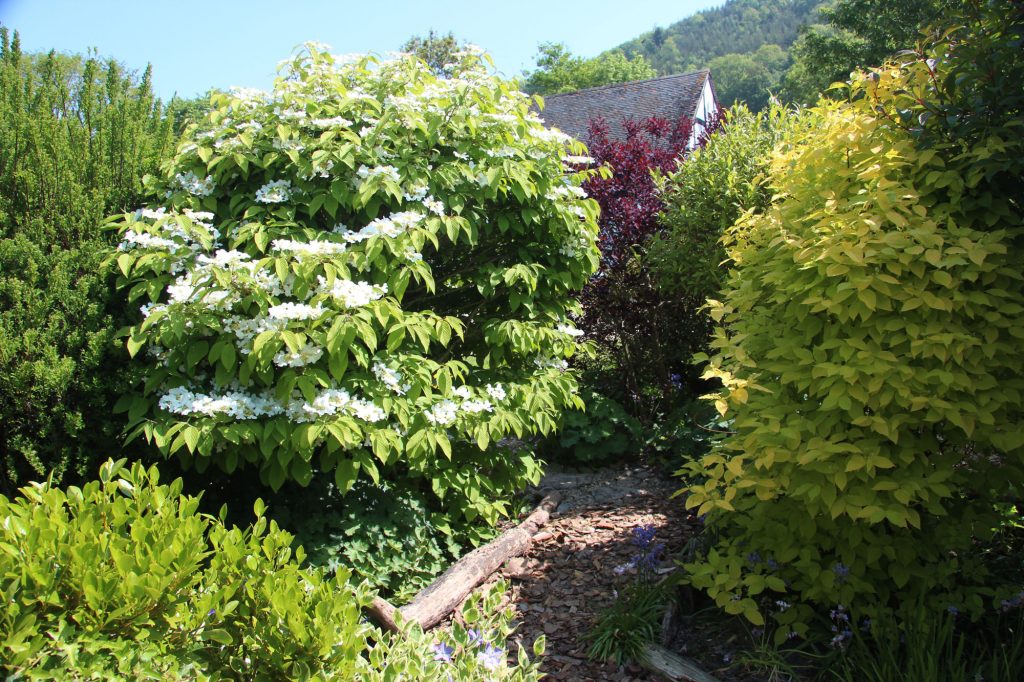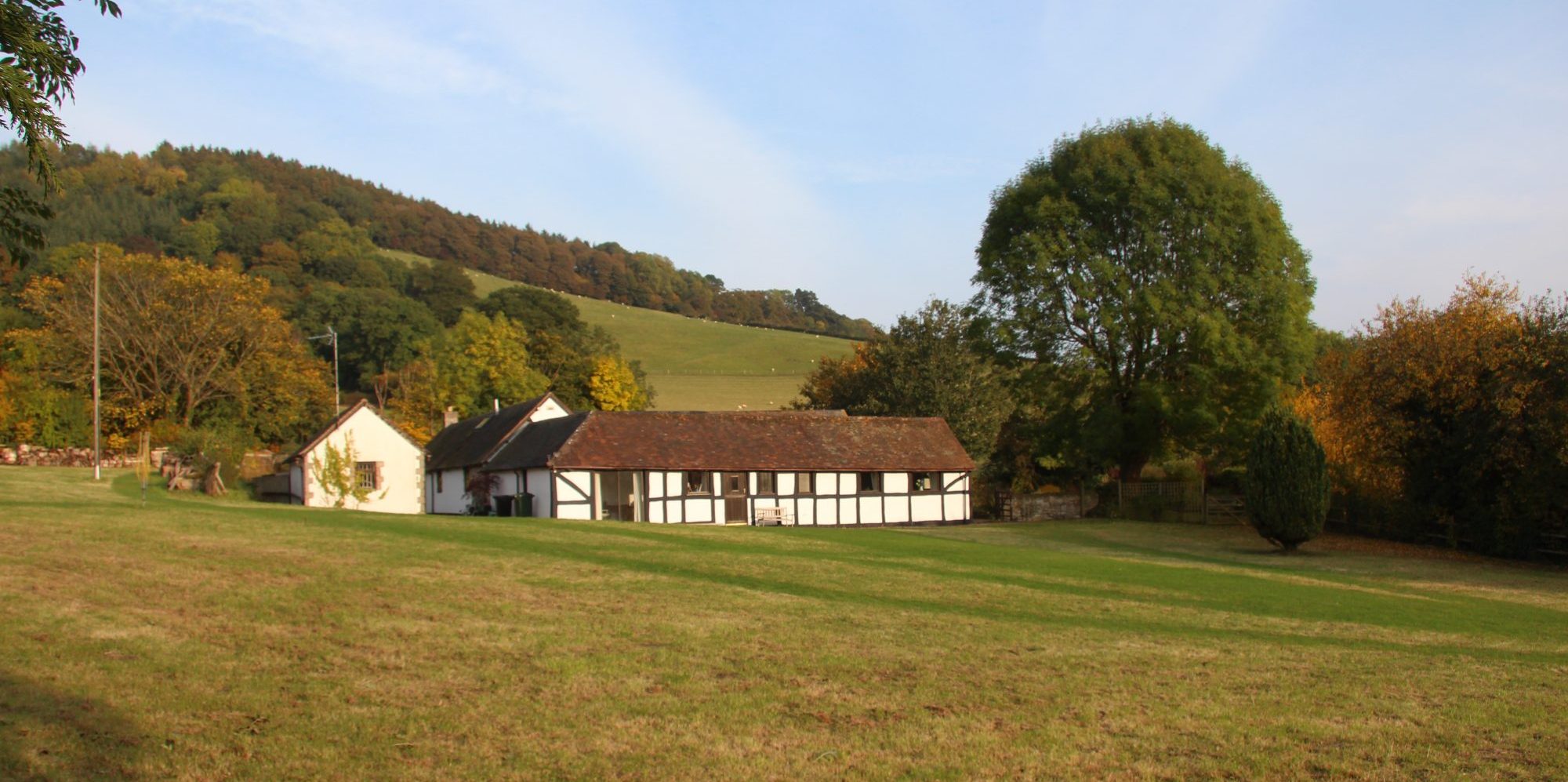When we arrived at our Shropshire home, I discovered an excellent range of established shrubs, chosen carefully to provide colour and interest all year. I gradually identified them – well nearly all of them. The problem was that many of the shrubs failed to produce any flowers in our first year, simply because they had all been pruned into round ball shapes. With around fifty mature specimens, this kept the shrub border neat with many anonymous leafy balls, but this shaping of the shrubs had cut away potential flower buds.
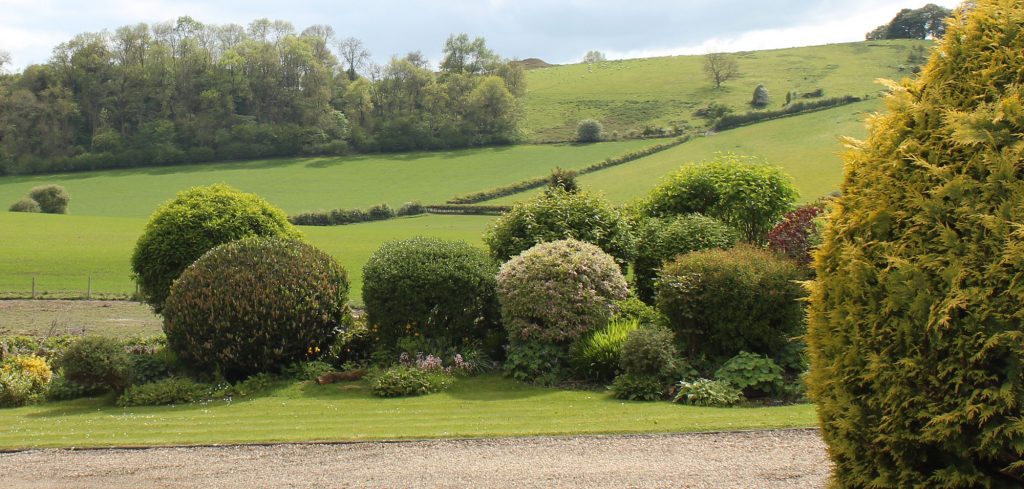
This had to change. Thus I did very little pruning in our first year- apart from the buddleia and the roses – and watched carefully. Now that spring is well under way I have been rewarded with a wonderful and varied display. There were a few shrubs which, without flowers, I had been unable to identify. In February I realised I had a magnolia from its characteristic furry buds, and although the March snow killed off most of them, from its few white flowers I could recognise magnolia stellata. Even earlier in the year, a large shrub revealed itself to be lonicera fragrantissima by its small creamy white flowers, though they did not seem particularly fragrant to me.
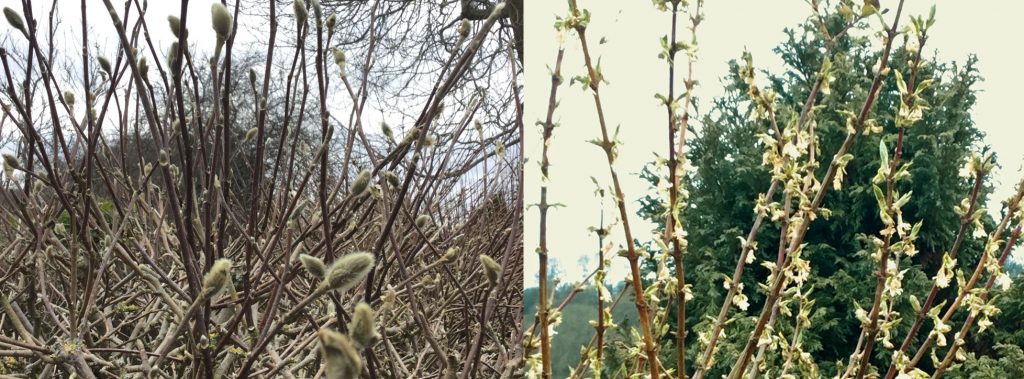
Beneath, around and behind the shrubs are a number of herbaceous plants: masses of perennial cornflowers (centaurea dealtbata, a real favourite of mine), swathes of deep blue geraniums, crowded thickets of montbretia (crocosmia, which flowered poorly) and rather tired clumps of red hot pokers. Spring produced primroses, snowdrops, daffodils, bluebells, lady’s mantle and pulmonaria, all dear to my heart.
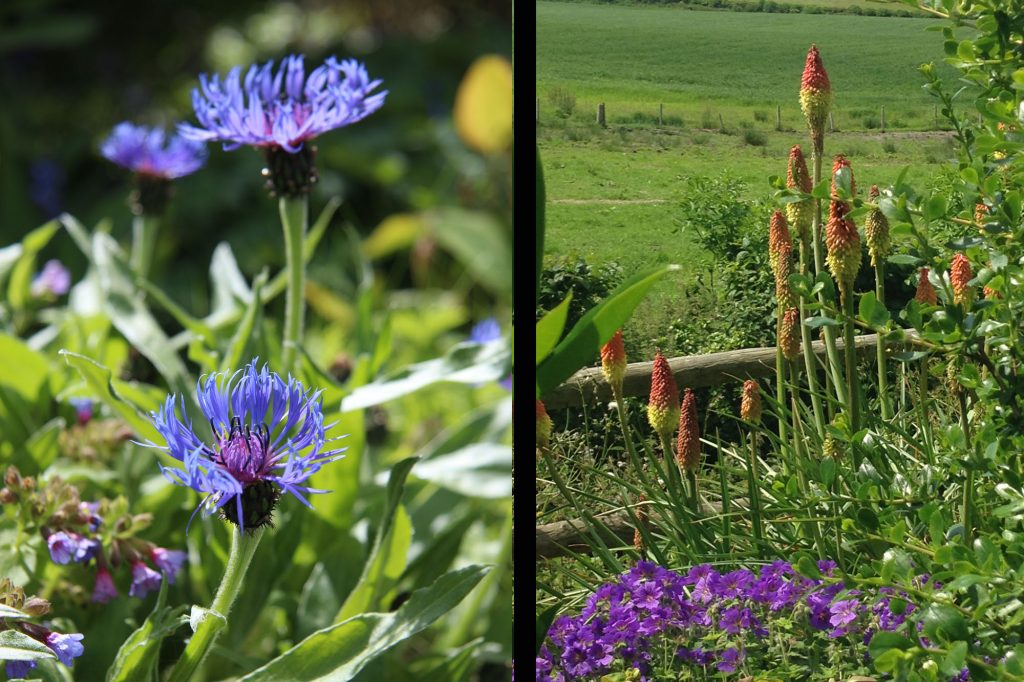
But in such a crowded deep border it was difficult to get close to the plants to fully appreciate them. I determined to clear a path through this border, so that the shrubs and herbaceous plants could be seen close‑up. Creating a way in was relatively easy, and I used the stones abundant in the garden to begin two paths.
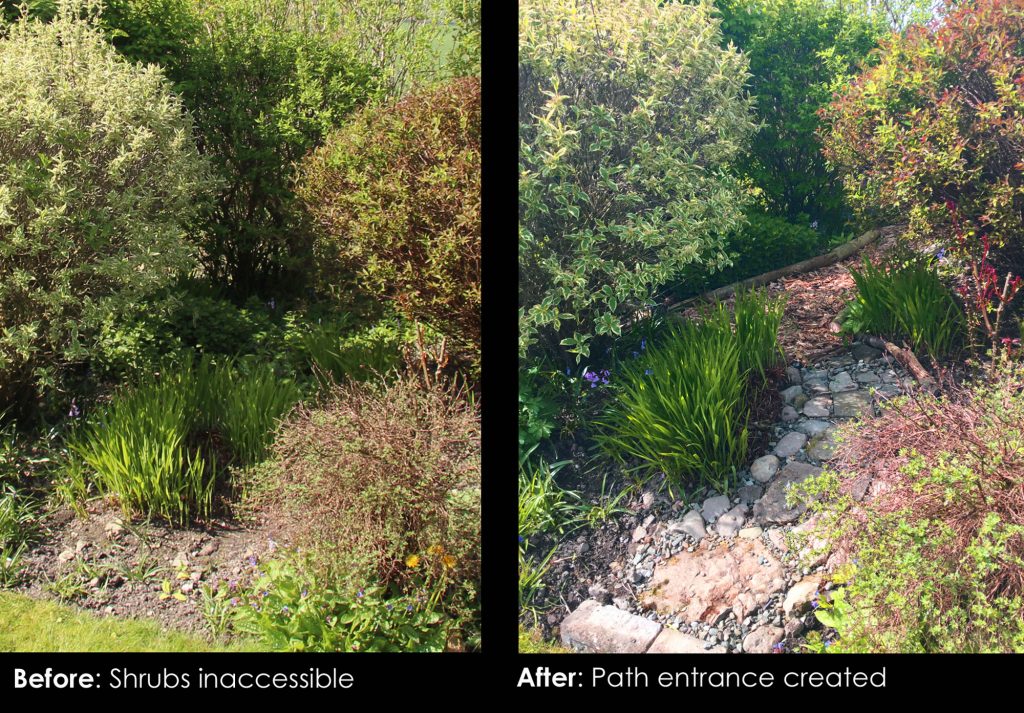
Ivy was cleared away and clumps of the perennials dug up, moved or potted up to go elsewhere later. I have removed hazels and numerous small ash tree seedlings and started waging a war against ground elder – and perhaps have won this first small battle .
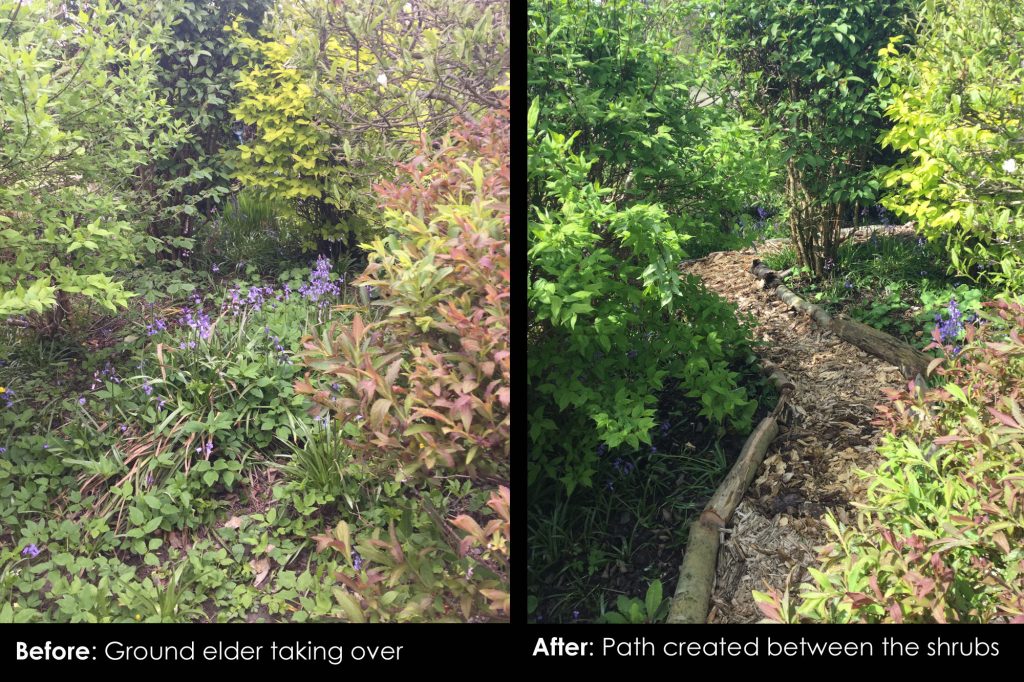
As I cleared the route I made two further discoveries right at the back against the fence: squashed next to the buddleia I spotted a tall, but rather sparse magnolia soulangiana, with a single pink goblet shaped bloom – I have cut back the buddleia to give it more space. And hidden by an overgrown forsythia, I found a Russian Olive (Elaeagnus angustifolia) something I had not heard of before, but clearly identifiable from its small cream tubular and fragrant flowers – it is a favourite of bees and insects, so, now with my path, I will be able to see if its olive like fruits develop.
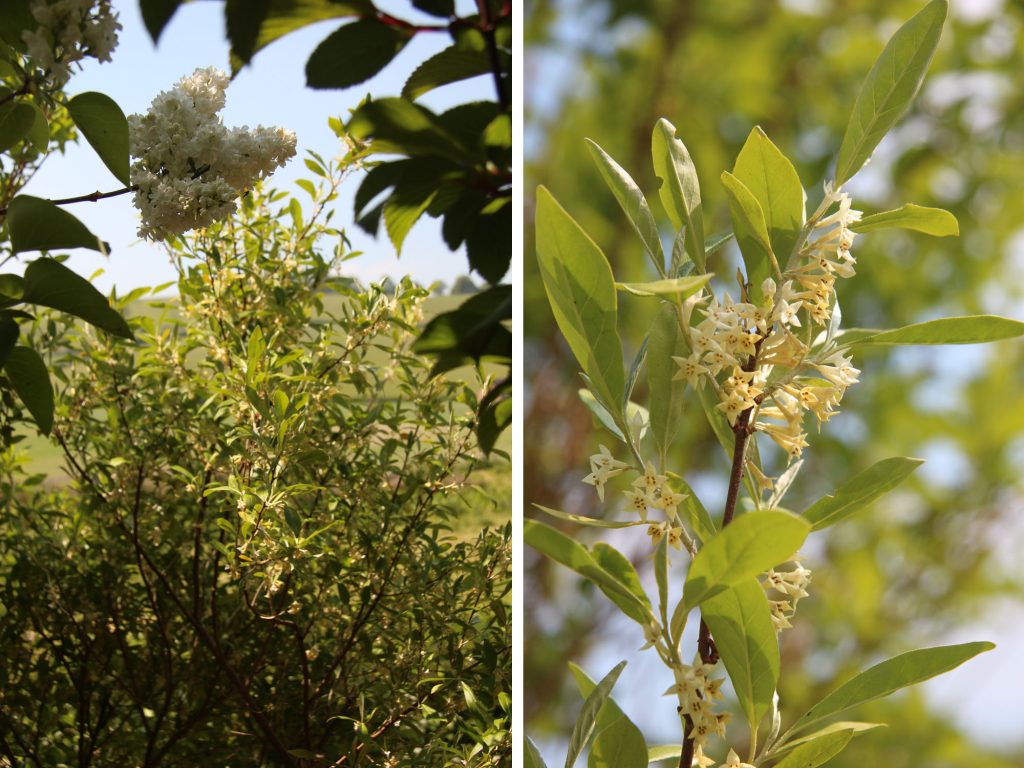
Once the path was made it needed something to keep down the weeds. It took quite a lot of time and effort to break up bark and smash up logs too wet for burning, but the result is a thick layer of wood covering the path, which hopefully will help me keep on top of the inevitable encroachment of ivy and ground elder.
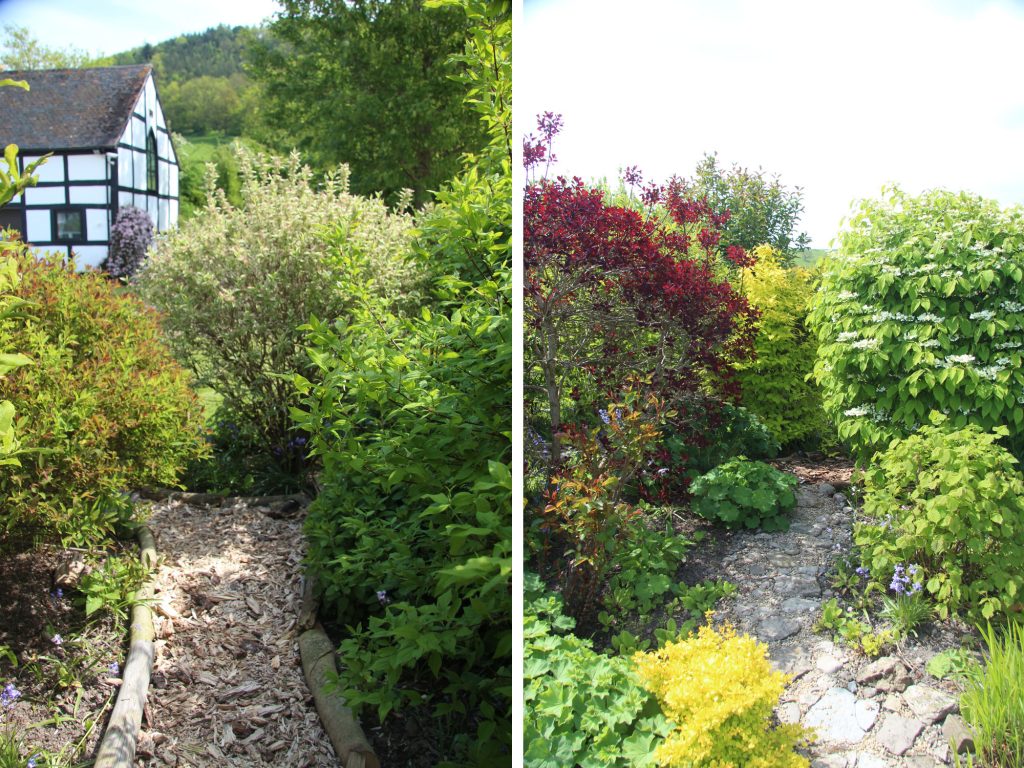
It’s been a lot of hard graft, and it will take dedication to keep the paths clear of weeds and plants trimmed back – so has it been worth it? The answer is a definite yes. It is a joy to wander between, behind and around the shrubs, seeing them from different angles and in different combinations; studying their leaves and blooms in detail; spotting unexpected plants growing beneath them, previously unnoticed. The shrub border was a wonderful feature of the garden when we arrived, but the paths now going through it have opened it up so that its true worth can be fully appreciated. In one word: glorious.
